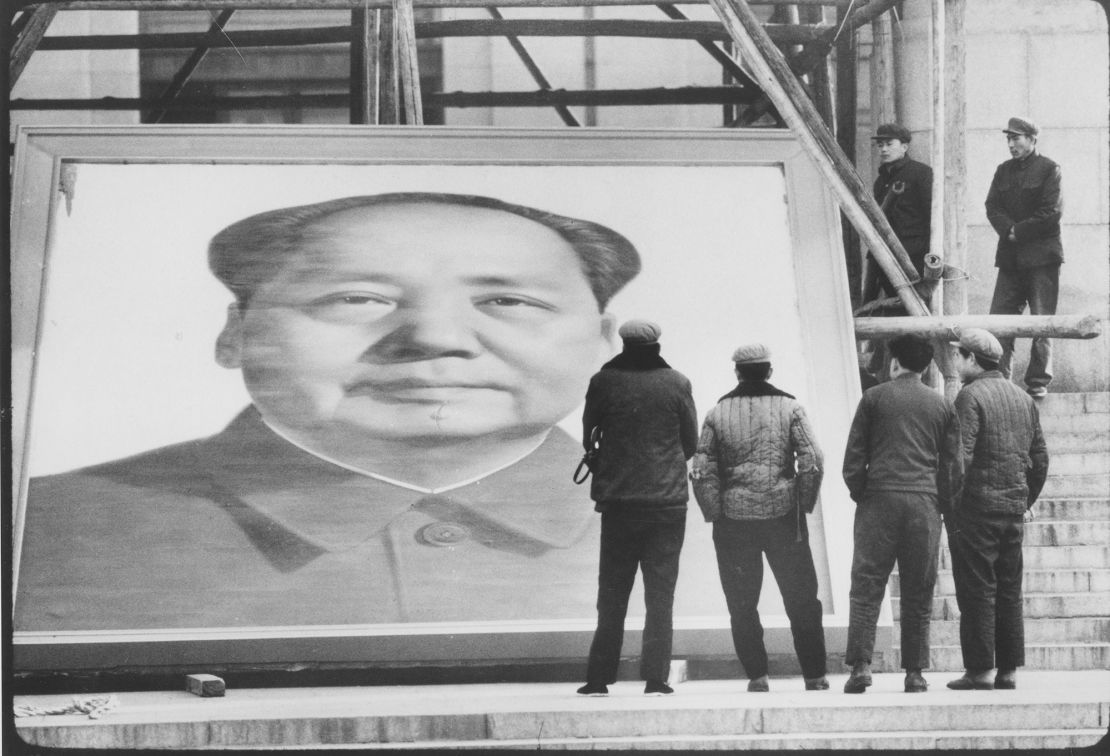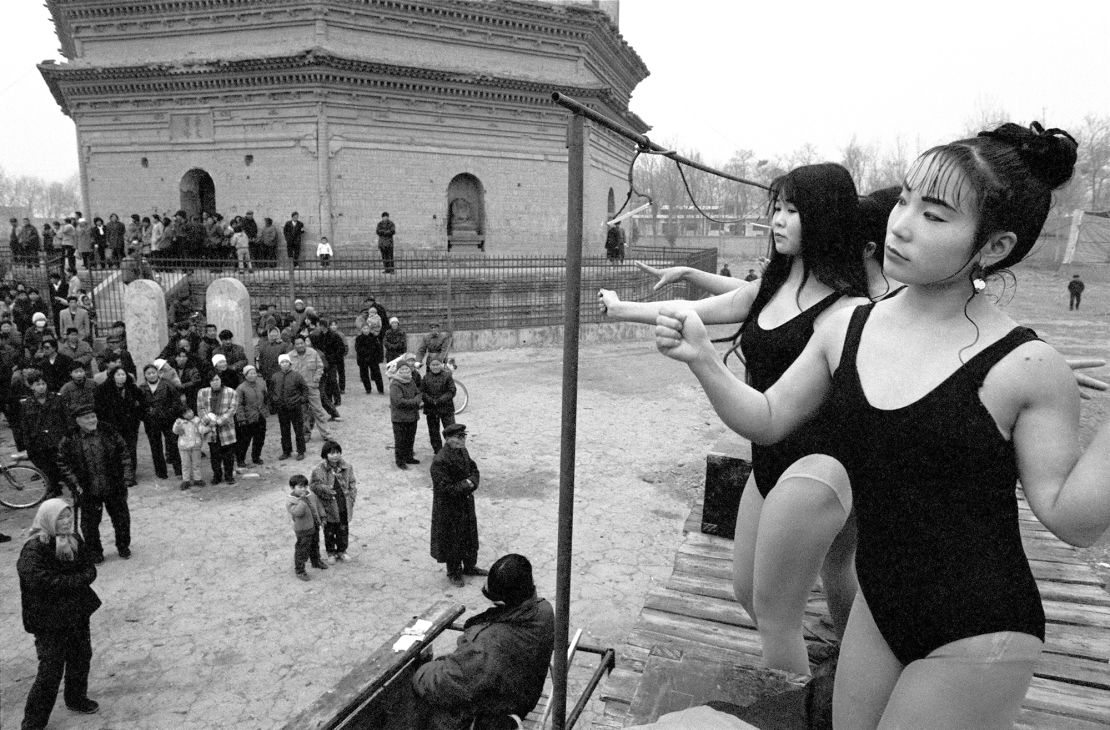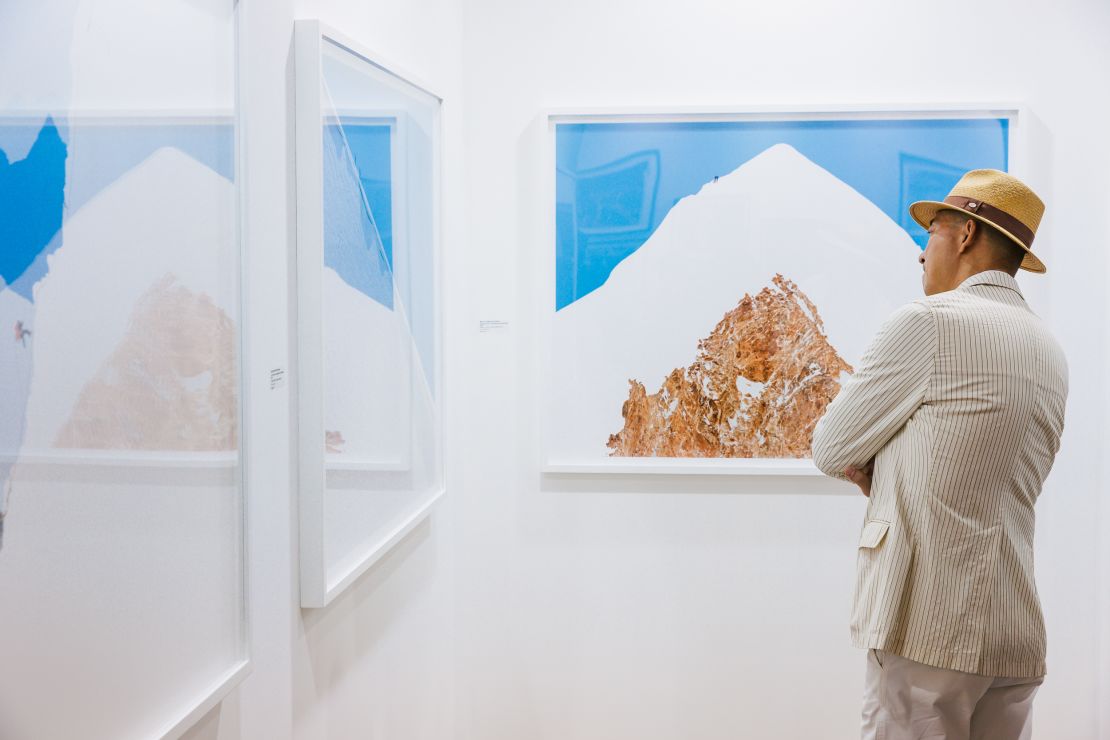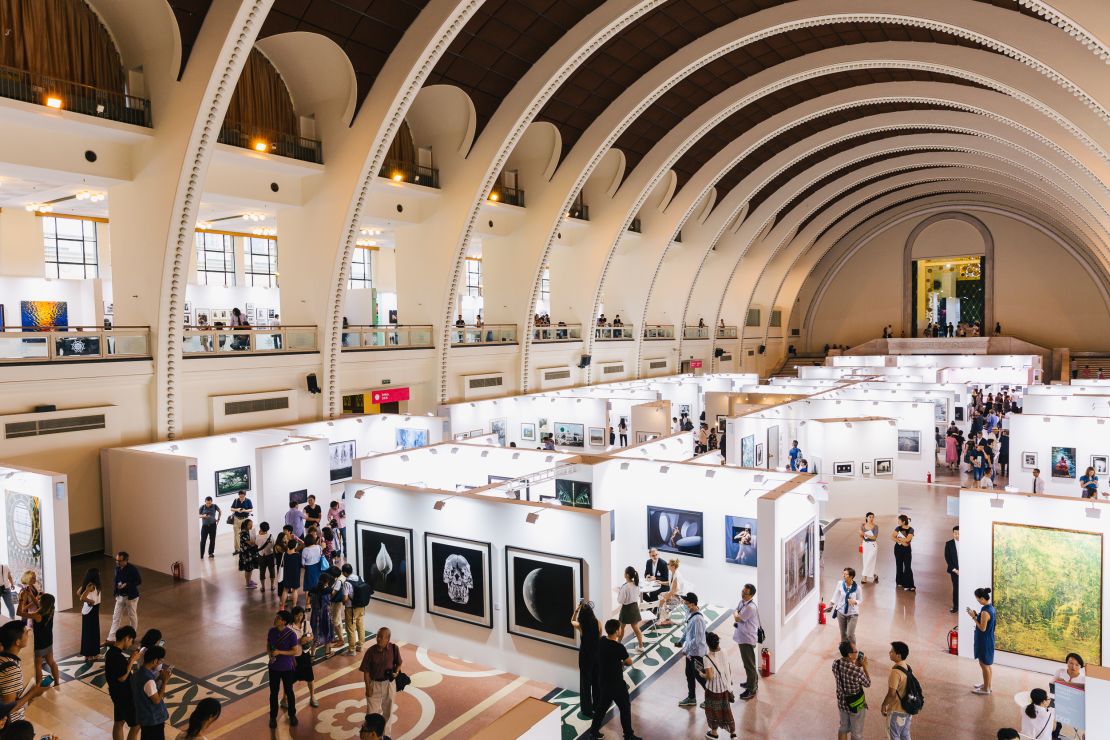Story highlights
PHOTOFAIRS Shanghai exhibits cutting-edge, contemporary Chinese and Asian photo artists
A new era of Chinese contemporary photography is characterized by mixed media and abstraction over social documentary
Government censorship remains an unspoken but influential factor in the art photography scene
Liu Heung Shing knows how to be at the right place at the right time. In 1989, that was Tiananmen. Then a photographer for AP, he remembers how other journalists went home as the protests dragged on. “I told them not to leave,” he says. “They didn’t listen.”
Days later, the tanks rolled in — and Liu became one of a few to document the Tiananmen Square massacre, creating images that stunned the world.
Now 65, he’s back in China for very different opportunity: An exploding interest in a new wave of contemporary Chinese photography that rides at the art world’s cutting edge, while leaving out the politics of the past.

The biggest show in town
Liu, the founder of the new Shanghai Center of Photography (SCoP), is one of the featured guests at PHOTOFAIRS Shanghai, in its third year already one of China’s largest international art fairs. The glitzy gathering attracts top galleries, collectors, and VIPs. Even the city’s vice-mayor is there, posing with Liu for a photo-op.
Like many things in China, photography has a long history with the Communist Party, which dominated the country’s image production for decades. Only in the 80s did a counternarrative emerge, in the form of politically charged art and documentary photography.
That was yesterday. Now, as China strives for recognition on the international cultural stage, its contemporary photography has mirrored global trends, focusing less on social reality and more on form.

Gone are the black and white, bleeding heart photographs of Liu’s generation. What’s hot are mixed media works that play with the physical contortion and transformation of images, approaching pure aesthetic.
‘A new art form’
Championing this movement is PHOTOFAIRS’ artistic director Alexander Montague-Sparey. “Photography needs to move away from memory to more abstract practices,” he says. “Photography is becoming like painting — we’re almost creating a new art form.”
A look back at Photofairs Shanghai 2016
The British director sees Chinese photo artists as new global trendsetters. “They generally have a maverick approach to the medium,” he tells me. “They’re not trying to fit in as Western artists are.”
He praises Wang Ningde, an artist who creates a composite of film negatives sliced and rebuilt into an “unnerving” sculpture-like work, that reveals itself only when light shines through. “I’ve never seen work like this being done in the West,” he says.
The work has another advantage: It won’t get censored. “Any kind of historical reference to Communism or anything too politically overt has to be controlled,” says Montague-Sparey. “That’s totally normal.”
Blank walls
For its part, the Chinese government is eager to develop this new photography-art scene.
Ten kilometers south of PHOTOFAIRS, Liu Heung Shing’s lush, light-filled Shanghai Center of Photography sits on a quiet plot. The museum is one of the pioneering institutions of an ambitious state-backed project called the West Bund — the name of a semi-governmental firm with a tract of land it hopes to transform into China’s version of New York’s Museum Mile.

Like PHOTOFAIRS, SCoP aims to push photography in a new direction.
“China’s government doesn’t care if you want to manipulate photographs and so on,” says Liu. “There’s much more room to develop for artists doing photography, rather than photographers doing photography in traditional sense.”
Liu introduces me to the West Bund’s general manager, Gan Jin, who says the choice to open a photography center was pragmatic. “It takes time to incubate people’s appreciation of art. I thought photography is the most blunt, fastest way. People don’t have the patience for traditional mediums.”
The suggestion is photography can jump-start the buying of art by China’s new middle class — flush with cash and hungry for cultural entrée. Liu says it’s “an obvious opportunity… people have so much private property. But you go into their houses and they still have blank walls with silly calendars.”
The challenge is convincing people to buck up thousands for a photograph.
Montague-Sparey is still trying to educate cautious new buyers about editioning. PHOTOFAIRS does not exhibit any photo with an edition greater 25, guaranteeing each print’s value. But it’ll take time to “create and enforce the rules.”
Meanwhile, foreign collectors are learning how to place Chinese photography into a tradition that’s been dominated by Westerners. Montague-Sparey says he exhibits “canonical” works next to Chinese works to show a “progression.” For example, the photos of Robert Mapplethorpe next to the sensual art of Yang Fudong.
‘Absurdity, difficulty’
As the market has changed, so has the art.
Mimi Chun, the director of Hong Kong’s Blindspot Gallery, has noticed a shift in China’s scene from what she terms “export art” in the 90s, which heavily referenced Chinese culture for an outside audience, to new work using a “very universal” language. “I don’t think you necessarily have to understand anything about China or Chinese to understand these works. Which is very different from the work that was made in the 90s.

“I’m not saying whether that’s good or bad,” she adds. “Just trying to draw a defining line about what’s changed.”
One of Blindspot’s represented artists is Cai Dongdong, featured prominently at PHOTOFAIRS. Years ago a photographer known for making charged black and white images, Cai now uses physical objects like mirrors to transform preexisting photographs, a reflection of his discomfort with putting new images into the world.
“It is now very difficult to distinguish Western and Chinese audiences,” Cai tells CNN Style. “I have withdrawn the role of image-making to start thinking from the perspective of the audience, and to contemplate the absurdity and difficulty of accepting an image.”
It’s reflective of an important shift in China’s visual culture — once revered, the straight photograph has lost much of its social meaning.
That may be because some images are still forbidden to be seen. Naturally absent from PHOTOFAIRS and SCoP are any trace of Liu’s famous Tiananmen pictures — records of the past that remain the most elusive and unspeakable of all.
PHOTOFAIRS Shanghai was held September 9-11, 2016 at the Shanghai Exhibition Center. PHOTOFAIRS San Francisco will be held for the first time January 27-29, 2017 at the Fort Mason Festival Pavilion.
For more on Chinese photography, visit the Shanghai Center of Photography year-round at the West Bund.





















